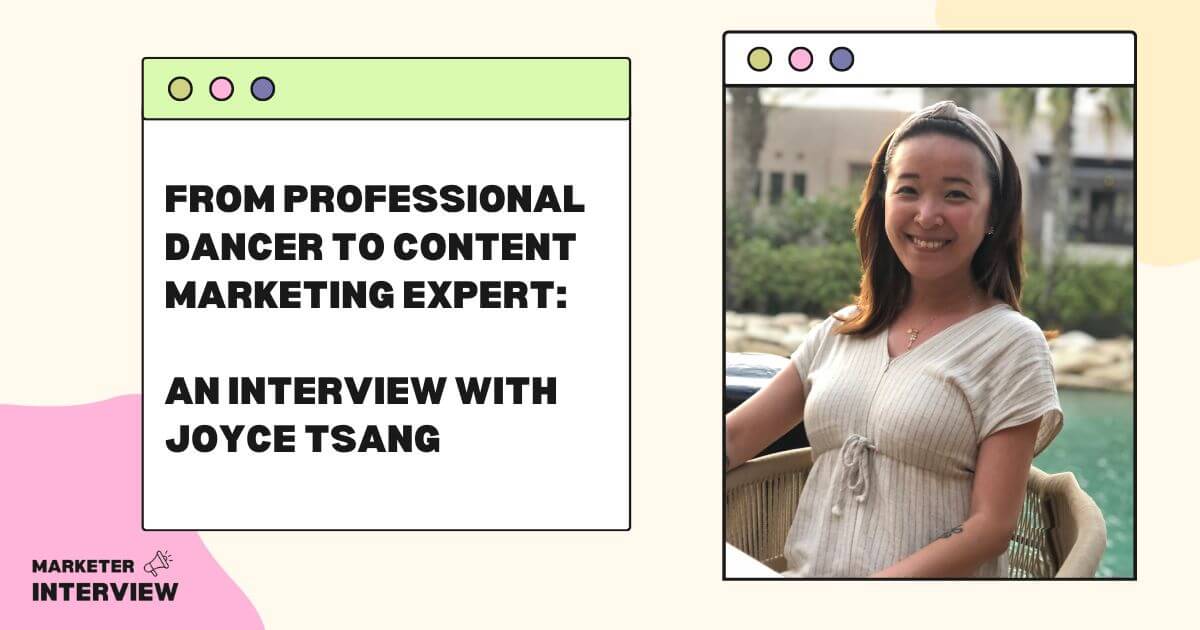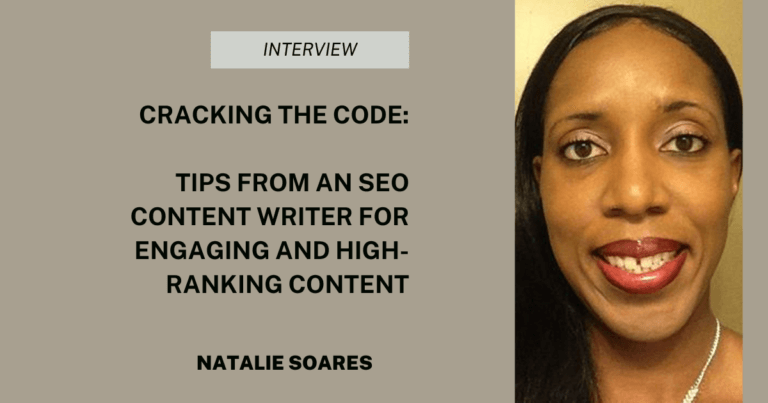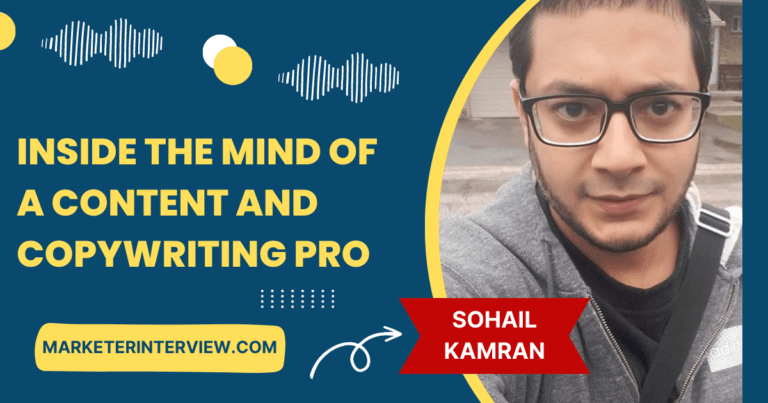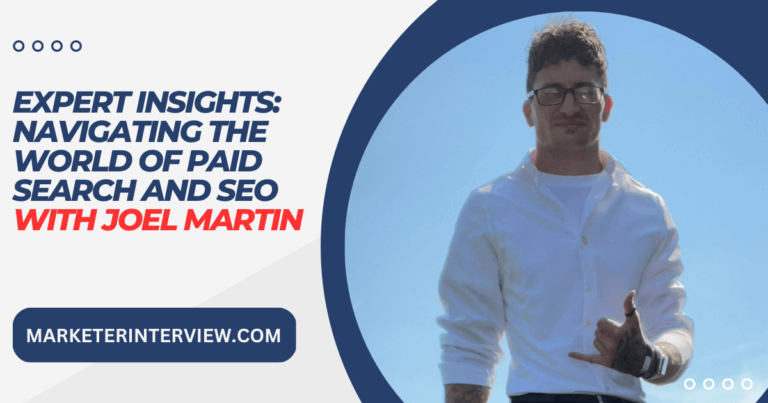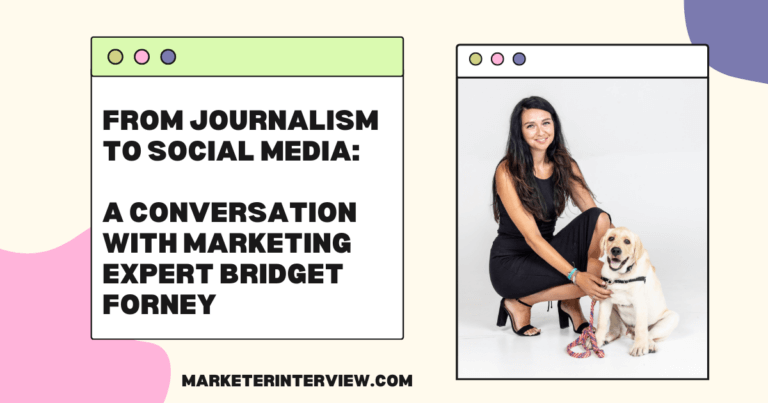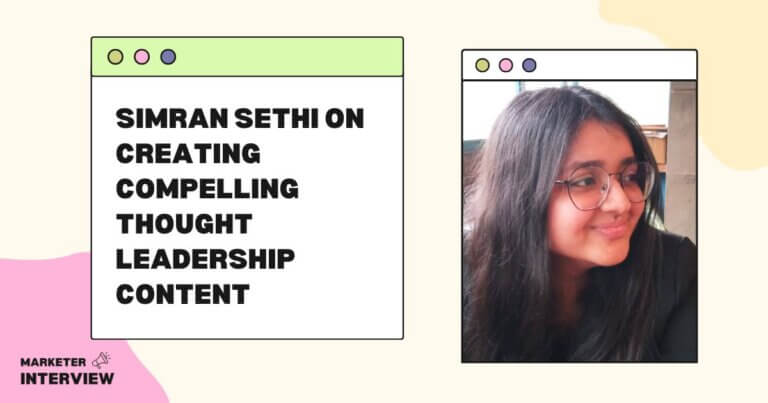An Interview with Content Marketing Expert Joyce Tsang
Today, we have the pleasure of speaking with Joyce Tsang, the Founder and Content Marketer of Joyce Tsang Content Marketing.
Joyce is an expert in content marketing, with a passion for simplifying complex concepts and a talent for formulating content strategies.
She has an impressive career, from being a professional dancer and choreographer to becoming a Content Director with little managerial experience.
Joyce will be sharing with us her insights on content marketing, the importance of content, and the role of AI in content marketing.
Contents
- 1 What inspired you to pursue a career in content marketing?
- 2 How do you define content marketing?
- 3 How do you create a content strategy for a new client or project?
- 4 How do you measure the success of a content marketing campaign?
- 5 Can you share a particularly challenging project you worked on?
- 6 How do you stay up-to-date with the latest trends and developments in content marketing?
- 7 What role does AI play in content marketing?
- 8 What are some common misconceptions about content marketing?
- 9 Can you share advice or a tip for someone just starting in content marketing?
- 10 What tools and software do you use as a content marketer?
What inspired you to pursue a career in content marketing?
I’ve always had a passion for storytelling, but it wasn’t until later that I discovered the concept of content marketing.
After graduating with a BA in Visual Arts, I struggled to find a job and had to ask myself what other skills I had beyond painting and drawing.
That’s when I realized that I had been writing many art history papers and started applying for writing roles, which led me to my first full-time job as a reporter.
From there, I transitioned to becoming an online editor, assistant video producer, head of social media, and eventually a Content Director while still pursuing my passion as a professional dancer on the side. While these roles may seem different, they all involve telling stories using different mediums.
As I progressed in my career, I started questioning what makes a piece of content successful. Whether to generate more views and engagement or drive business impact, I wanted to understand how to justify my effort and results with something that interests others. I was tired of throwing spaghetti on the wall and seeing what sticks, so I started looking for a systematic way to figure it out.
That’s when I discovered content marketing. It explained why some of my previous content performed well while others didn’t, and the strategic perspective gave me the confidence to suggest and reject content ideas.
However, many businesses didn’t understand the value of content marketing and were just hiring content vending machines to create content for them. I didn’t want to work like that.
So, I quit my full-time job and decided to take a break. But I received a DM on LinkedIn the next day asking if I provided Content Marketing services.
That stranger became my first client, and he referred more clients, which led me to start my own business, Joyce Tsang Content Marketing Limited.
How do you define content marketing?
Content marketing is a strategic approach that creates and distributes valuable, relevant, and consistent content to attract and retain a defined audience and drive customer action.
There are several reasons why it is essential for businesses today, but I believe the following three points are the most important:
1. The influx of information
In today’s world, an overwhelming amount of information is available to consumers. Unfortunately, simply increasing your budget or quantity of content won’t cut through the noise.
To capture your audience’s attention, create content relevant to their lives and provide value. Though it sounds straightforward, it takes work to do.
2. The change in customer journeys
The customer journey is no longer linear. For example, people don’t buy after seeing an advertisement.
They go through various stages of research, reading up on testimonials, and getting influenced by others on social media. As a result, brands that consistently show up with on-brand and contextual content become top-of-mind for their audiences.
3. The power of shareability
Word-of-mouth recommendations are no longer limited to verbal conversations. Recommendations can happen through sharing a link, redeeming a promotional code, downloading a document, or conversing on dark social.
While measuring these triggers or attributions for purchase is hard, they must be in place to increase the likelihood of audiences even considering your brand in a highly competitive market.
How do you create a content strategy for a new client or project?
Creating a content strategy for a new client or project always starts with identifying the brand’s key message.
Many brands believe they already have this in place, but they often have a mission, a list of values, or a set of features that no one outside the company cares about. Identifying a brand’s key message involves crafting a straightforward passage that encapsulates who they serve, how they serve them, and why people should care.
Next, I dive into the target audience persona.
By researching the online behaviors of the target audience, including the things they search for, questions they ask, and content they like, I better understand their characteristics, pain points, and desires. This knowledge helps me to create content that helps them solve problems or achieve their goals.
The most important part of my job is to identify the common ground between the brand’s key message and the target audience persona. In other words, what stories can the brand tell that will attract its target audience?
This is where content pillars come in, the primary themes or topics the brand will focus on creating content around. Once these content pillars are in place, we can move on to platform distribution, content mock-ups, tone and manner, and content funnel.
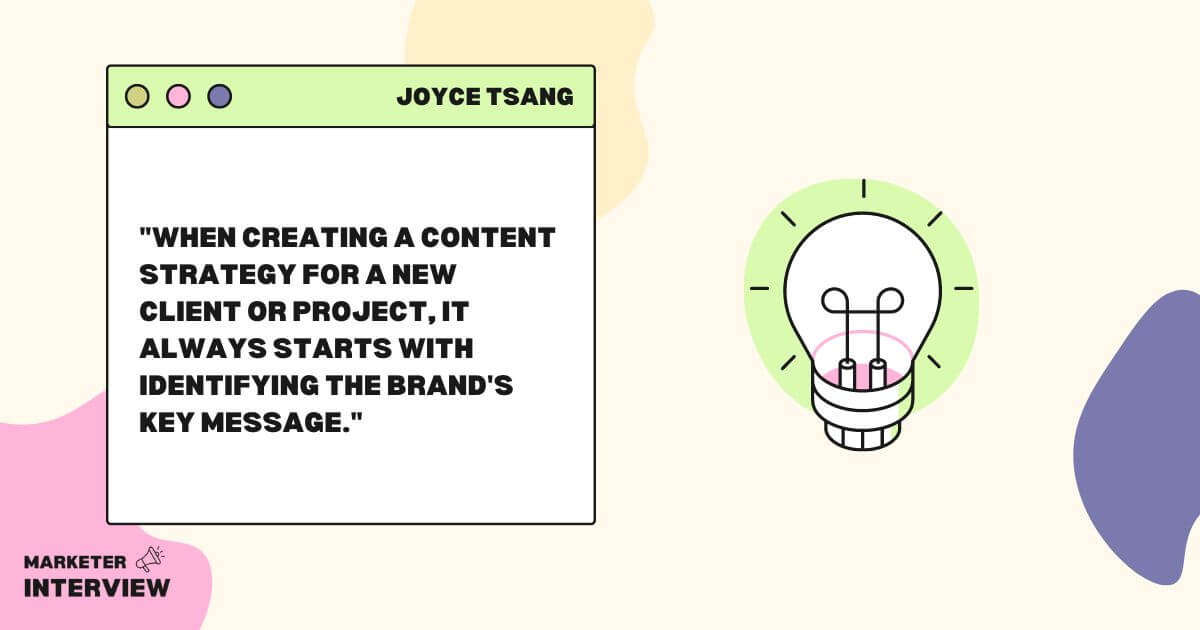
How do you measure the success of a content marketing campaign?
Measuring the success of a content marketing campaign involves looking at the objectives, goals, and KPIs set before executing the campaign.
Establishing these metrics initially is crucial to ensure the marketer isn’t cherry-picking metrics that work to their advantage but don’t lead to any tangible business impact.
Successes in content marketing can be categorized under funnel stages – top of the funnel (TOFU) for brand awareness, middle of the funnel (MOFU) for interest, and bottom of the funnel (BOFU) for consideration.
Potential KPIs for TOFU include impressions, reach, views, and traffic. Potential KPIs for MOFU include average time spent, bounce rate, average time watched, and pages/sessions. Potential KPIs for BOFU include downloads, form fills, registrations, and other actions.
It’s important not to measure the success of a content marketing campaign solely by sales or short-term metrics, such as monthly revenue or users. Instead, content marketing is a long-term investment, and campaigns should be viewed as accelerators in the bigger content marketing picture.
It’s essential to go back to all the data points quarterly, biannually, and annually to see how they have impacted overall numbers.
I love measuring content marketing success by how much money I’ve saved. How much would it cost me if I had to achieve the same traction through media or ad spending? This provides a tangible measurement of the campaign’s impact on the business’s bottom line.
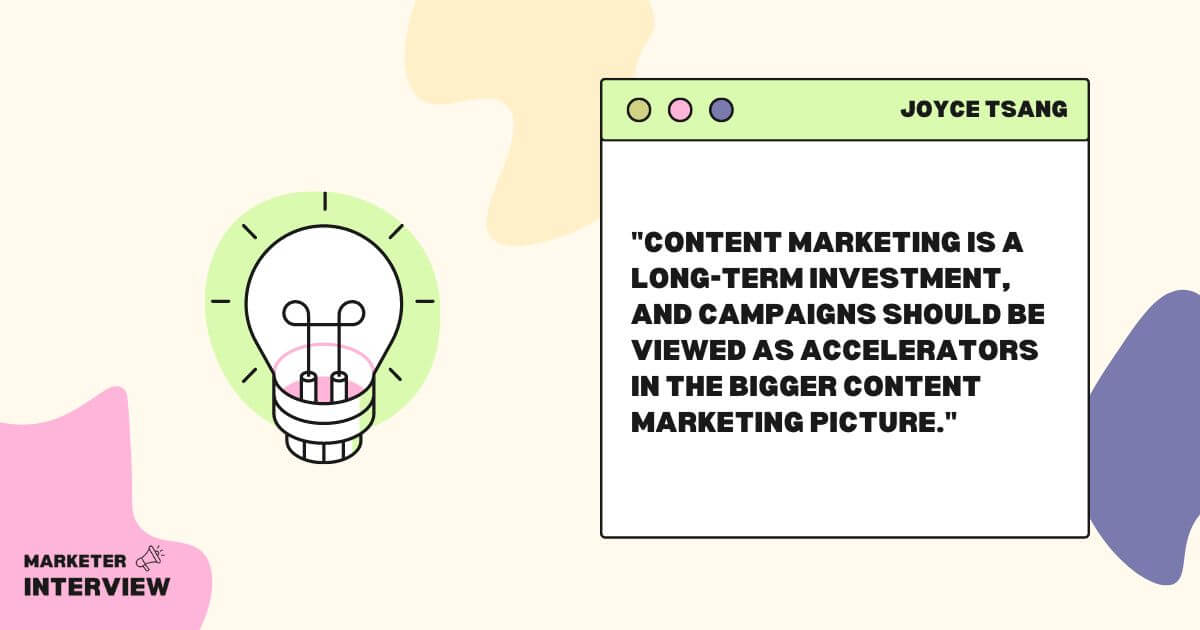
One of the most challenging projects I have worked on was when I served as a Content Director at an advertising agency. I was tasked with reviewing the content of a global brand to educate the APAC team on how to assess existing and future content.
The primary challenge of this project was that the brand did not have a structured content pillar system in place. Without clear categorization and objectives for their content, it was difficult to spot patterns, make reliable assumptions, and scale content in the future.
It was like being asked to clean someone’s house without any specific instructions on what “pretty” means – finding socks in the pantry and a fridge in the bedroom while being unable to locate the closet.
Doing a content review for a brand without a content marketing system in place was daunting. As a result, many decisions were merely educated guesses, with positive results relying heavily on luck.
Despite the challenges, I created a structured content pillar system to help guide their content creation efforts in APAC.
By clearly defining the categories and objectives of their content, I created a grading system that the APAC team could use to assess their content and make informed decisions about future content creation. This allowed them to better understand the quality of their existing content and replicate predictable results based on previous learnings.
How do you stay up-to-date with the latest trends and developments in content marketing?
To stay up to date with the latest trends and insights in content marketing, I have a daily routine that involves going through my Google Alerts and listening to the Hustle Daily Show podcast by Hubspot.
I also check out the Demand Community and Superpath Slack group threads and scroll through Reddit’s content marketing section. During my lunch breaks, I occasionally watch related webinars and videos and take online courses.
Additionally, I am always looking for new ways to make my operations more effective. Recently, I have been exploring the use of AI in content marketing to see how it can benefit my work.
It’s essential to test new technology and tools to determine their potential impact, as simply reading or hearing about them can only do so much.
What role does AI play in content marketing?
AI is a tool that has various applications, including content marketing. It’s similar to a knife – the masses use it for basic functions and immediate outcomes, such as generating one-click content, just like cutting with a knife.
However, those who are genuinely interested in the technology and want to apply it creatively in their work can find innovative ways to use it, as those who discover life hacks with different utensils.
My teammates and I in the teamlancing model have used AI to various degrees. For instance, we ask AI to grade, optimize, and comment on our work to gain inspiration for improvement. I also experiment with AI by asking it to write as different characters by providing prompts with websites, links, and information.
In the future, especially with the advent of artificial general intelligence (AGI), AI can replace virtual assistants and distribution tasks, such as creating, scheduling, and monitoring social media posts.
Humans should refrain from investing their time and effort in tasks that AI can perform. However, AI cannot replace marketers who read the bigger picture and have strategic abilities.
Hence, there is a lot of room for solopreneurs to grow, as they can theoretically deliver more deliverables without the need to expand or hire, provided they can use AI intelligently to their advantage.
What are some common misconceptions about content marketing?
There is a common misconception that Content Marketing is only reserved for “sexy” brands with ample budgets for brand building and who are okay with immeasurable results. However, that could not be further from the truth.
In my opinion, Content Marketing works even better for “boring” brands because it allows for more creativity. It’s not always about reinventing the wheel: Simple stories within educational content can be just as, if not more, powerful than fancy creative campaigns.
Furthermore, Content Marketing is ideal for those with a limited budget but a desire for long-term growth. While it may deliver results slower than advertising, its impact is guaranteed to outlast competitors who rely solely on paid tactics. Understanding the importance of brand building is crucial to realizing the true potential of Content Marketing.
Lastly, it needs to be made aware that the impact of Content Marketing can be measured. Unfortunately, many people don’t feel this way because they do not have a comprehensive framework for measuring results.
Starting with content pillars, understanding the target audience, and setting objectives are tedious, but ensuring success is essential. Unfortunately, many fail to measure results by skipping these steps and jumping straight into content creation.
Content Marketing is a long-term investment that requires significant effort initially, but the results always pay off.
To ensure the success of your content marketing efforts, it’s crucial to spend the most time discovering who you and your brand are.
Getting caught up in social media trends, algorithms, or the latest technology is easy, but those things can come later. The most critical aspect of content marketing is understanding why you’re telling the stories that you’re telling. This is the backbone of your content marketing strategy.
Before diving into content creation, take the time to define your brand identity, values, and mission. Ask yourself who your target audience is and what pain points or challenges they face. By understanding these fundamental aspects of your brand and audience, you can create content that resonates and provides value.
What tools and software do you use as a content marketer?
As a content marketer, I rely on various tools and software to help me streamline my workflow and improve my content creation process. Here are some of my personal favorites:
- Loomly (CMS): I use Loomly not only to schedule posts but to record the allocation of my content pillars. Its tagging abilities allow me to input and tag my content pillars under my posts. Then, at the end of the month, I can easily spot content patterns by seeing which content pillar my best-performing post(s) belong to.
- Nutshell (CRM): I started with Trello and Monday.com but wanted a system to manage projects and have an EDM function. Nutshell has both the functions of a CRM (lead tracking, forms, segmentation) and an EDM platform (creating, sending out, and monitoring email newsletter performances). As a result, I can easily see the engagement of each lead and set up pipelines accordingly.
- Poe.com (AI): Poe.com provides me access to ChatGPT from Hong Kong and other AI platforms.
- Veed.io (Video editor): I use Veed.io to instantly upgrade my vertical videos’ look. I particularly enjoy their subtitle style options and the process bar that can be added with a click.
- Arc (Browser): Arc is the latest addition to my list. It allows me to set up pinned tabs under different folders, making it much more organized and easy to access. They will also automatically archive opened tabs after 12 hours to keep things clean.
